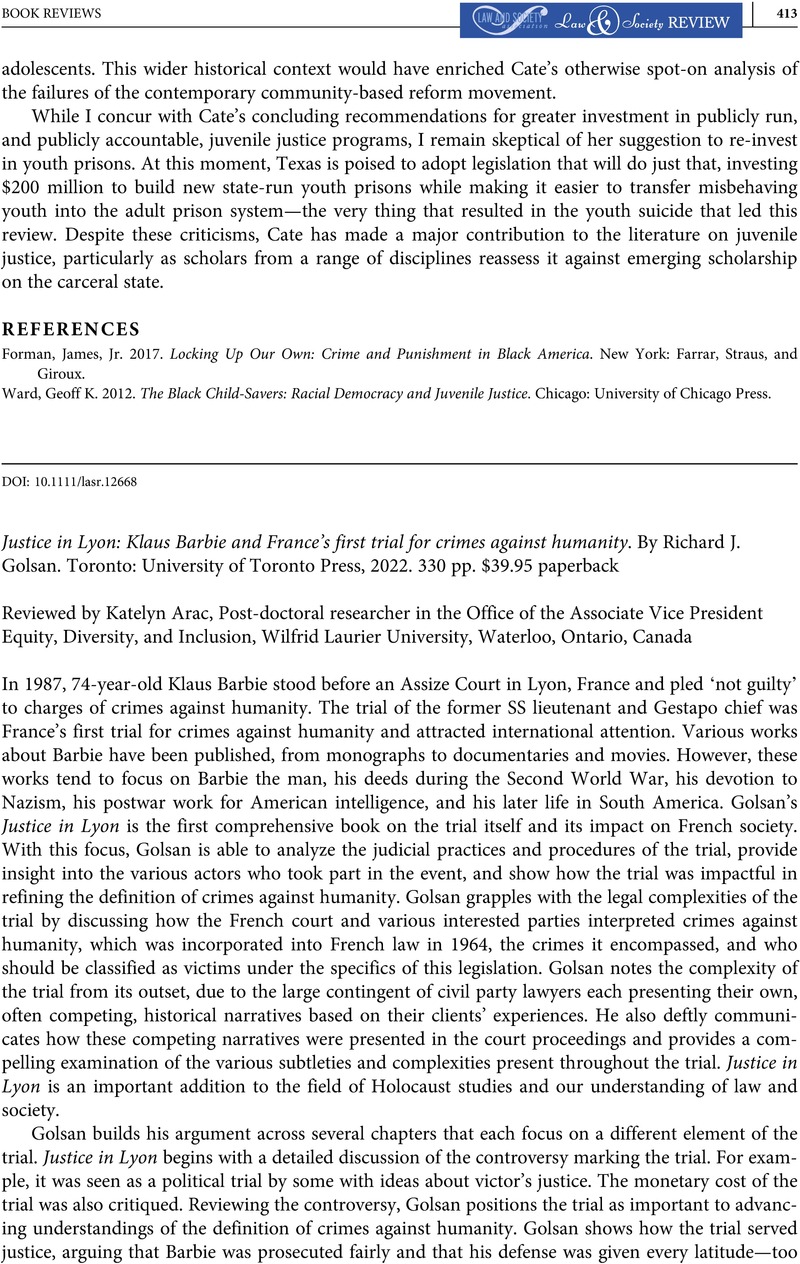No CrossRef data available.
Article contents
Justice in Lyon: Klaus Barbie and France's first trial for crimes against humanity. By Richard J. Golsan. Toronto: University of Toronto Press, 2022. 330 pp. $39.95 paperback
Review products
Justice in Lyon: Klaus Barbie and France's first trial for crimes against humanity. By Richard J. Golsan. Toronto: University of Toronto Press, 2022. 330 pp. $39.95 paperback
Published online by Cambridge University Press: 01 January 2024
Abstract
An abstract is not available for this content so a preview has been provided. Please use the Get access link above for information on how to access this content.

- Type
- Book Review
- Information
- Copyright
- Copyright © 2023 Law and Society Association.


